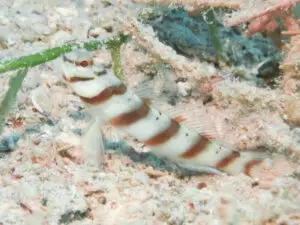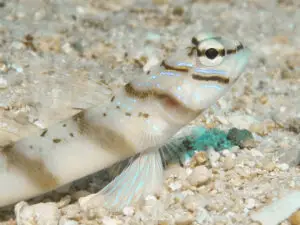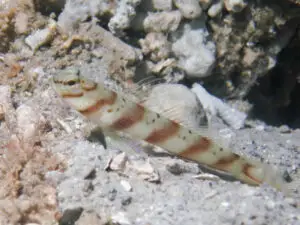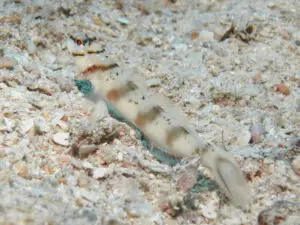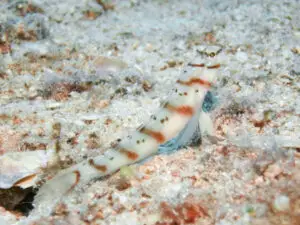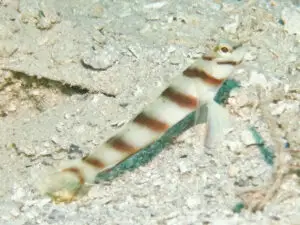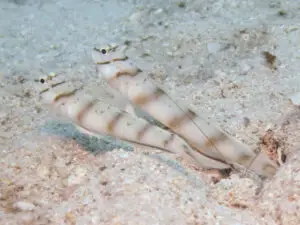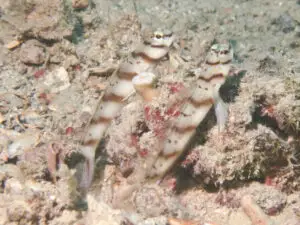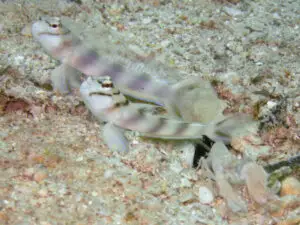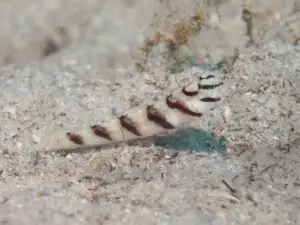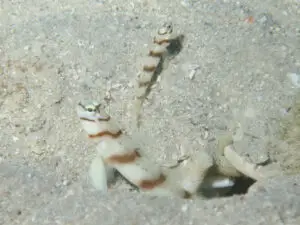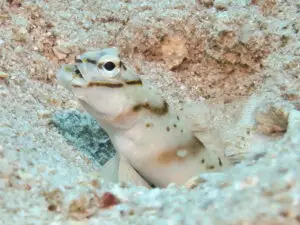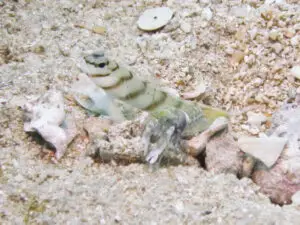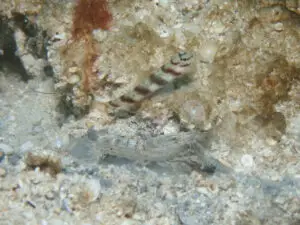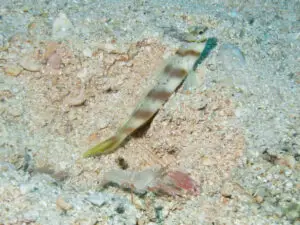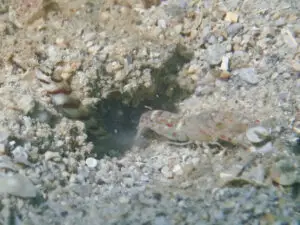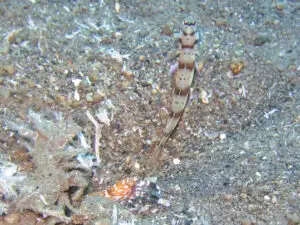Diagonal Shrimpgoby
Amblyeleotris diagonalis
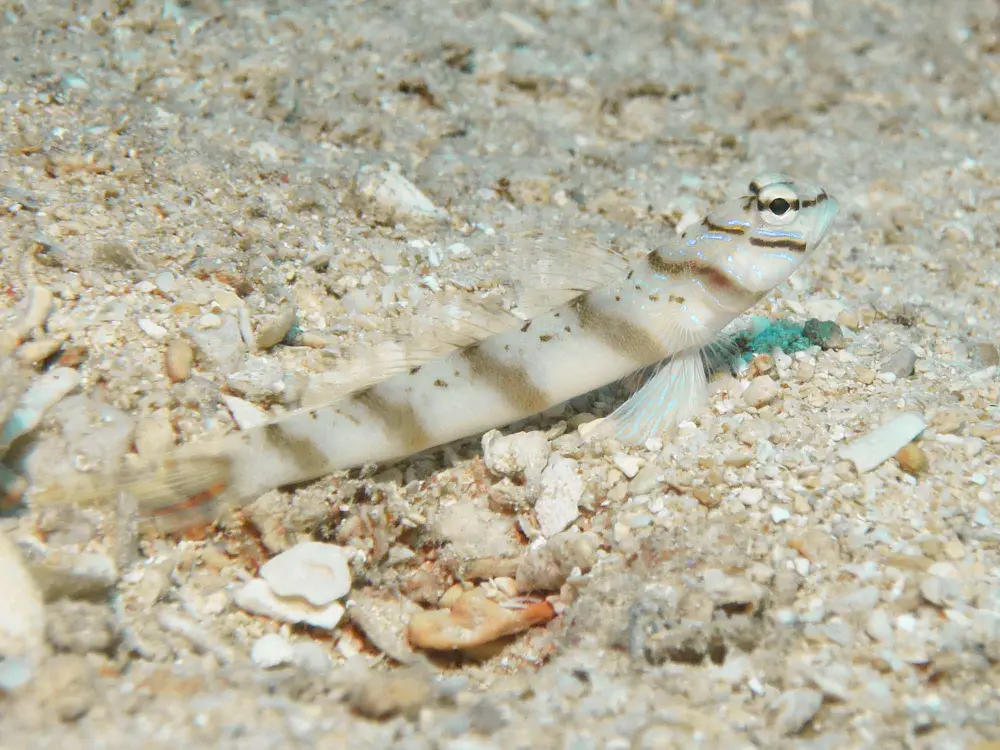
Diagonal Shrimpgoby
Amblyeleotris diagonalis
Polunin and Lubbock, 1979
Description
Body Design A medium sized goby, around 11 cm long, white with two fine diagonal lines on the head, five brown bars on the body, and a brown crescent on the tail fin. Between the brown bars there are fine speckles dorsally and no markings ventrally.
The head is distinctively marked with two diagonal brown bands, one running through the eye and one running behind the eye. These have reflective blue lines running along their edges. There are other iridescent blue spots either side of the first brown band.
Fin Design The dorsal fins are transparent with some fine spots on the first and fine brown dots on the margin of the second. There are circular brown patches at the base of both, the result of vertical extensions of the brown bars on the body. There is variation in the dorsal fin shape which may be sexually determined. The pectoral fins are transparent. The pelvic fin is pale green with blue rays and a blue bordered purple-brown trailing edge. The anal fin base is pale green with a blue edged purple border and clear distally. The caudal fin is oval, pale yellowish with a blue edged purple-brown crescent near the leading edge, effectively making a sixth brown bar.
Except for the caudal fin these colours may not always be visible, making all the fins look transparent.
Diagnostic features
This goby is superficially similar to several others in its genus but the two fine diagonal lines on the head are diagnostic.
Similar species
Amblyeleotris gymnocephala, Mask Goby, Amblyeleotris rubrimarginata, Redmargin Goby, Amblyeleotris steinitzi, Steinitz’s Goby. The diagonal lines are the distinguishing feature.
Taxonomy
Other names Slantbar shrimpgoby
Natural History
Habitat
Found in depths of 5 to 30 metres on sand flats or gentle slopes in areas of moderate current away from the reef edge. Sometimes live in areas of scattered seagrass. The substrate is clean coarse sand with moderate amounts of shell and coral rubble.
Behaviour
Pair behaviour They are usually to be seen in pairs at the burrow entrance. Too close an approach by another fish is met with widely gaping mouths and flaring of all fins in unison by the pair of resident gobies. They will allow close approach by divers but are nervous of the camera pre-flash which makes them difficult to photograph.
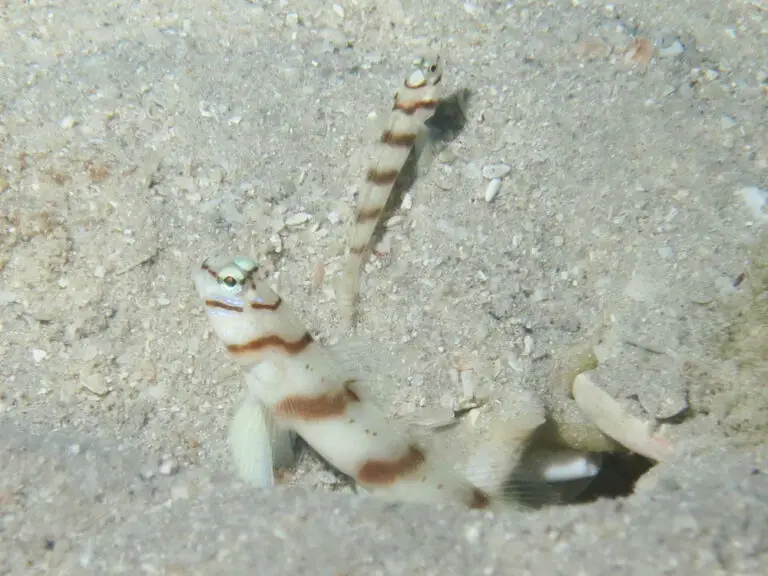
Diet Most food items, like copepods, are too small to see clearly but some crustacea are bigger and the antennae can be seen projecting from the mouth as they are swallowed.
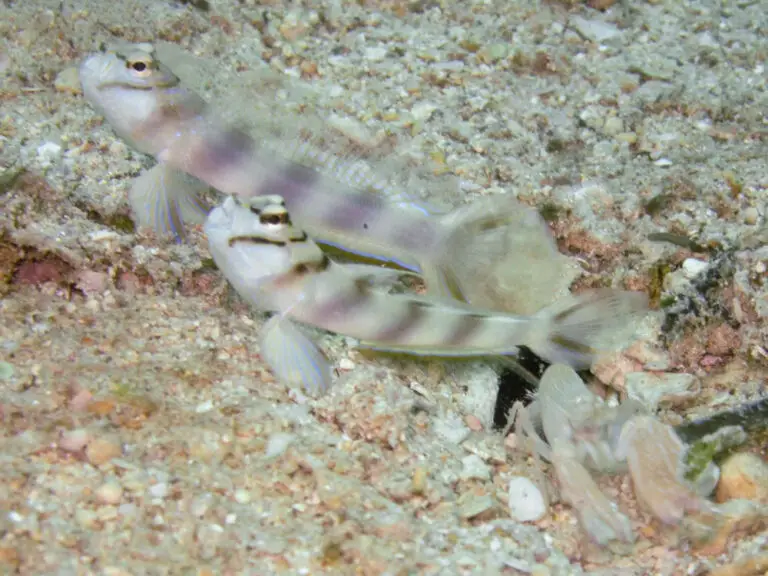
Pair formation Initially the burrow is occupied by a single goby. After some time it is joined by a newly settled second one of the other sex and there is an obvious size disparity until it matures. The two adults have slightly different fin shapes. This may be a sexual difference
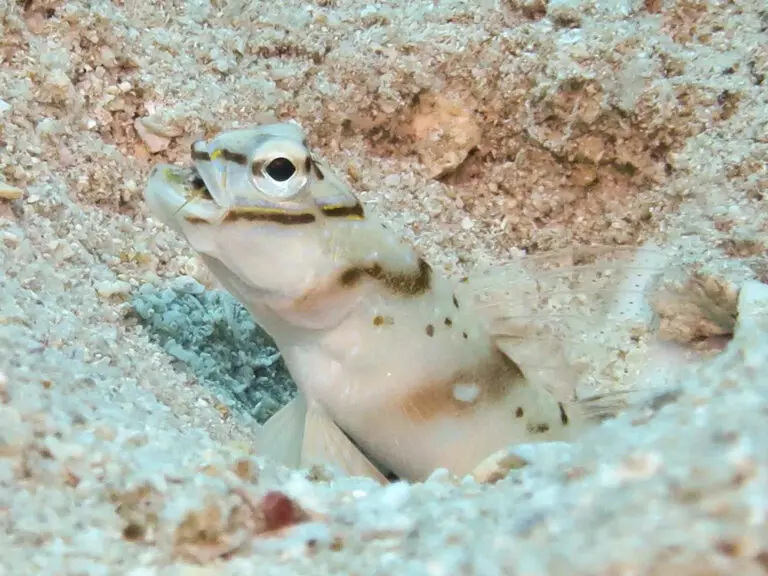
Distribution
Published distribution: Red Sea, Persian Gulf and East Africa to Western Pacific from Ryukyu Islands to Great Barrier Reef, Solomon Islands and New Caledonia.
Our records: Papua New Guinea, Solomon Islands, and Australia at Lizard Island, Ribbon Reefs, Low Isles and Fitzroy Island, north Queensland.
Associated Shrimps (five shrimps)
Black-sided Snapping Shrimp, Alpheus cf djeddensis
Diagonal Barred Snapping Shrimp, Alpheus rapacida
Pink Pyjama Snapping Shrimp, Alpheus ochrostriatus
Red-Speckled Snapping Shrimp, Alpheus species 10
Tiger Snapping Shrimp, Alpheus bellulus
These are all shrimps that work in sand at moderate depths a short distance from the reef though the Black-sided and the Tiger shrimp also make burrows in shallower water, and the Red speckled and Mottled spot-tail are commonly in more silty substrate.

